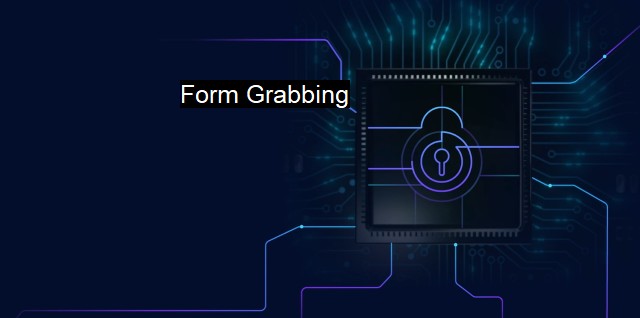What is Form Grabbing?
Form Grabbing: The Cybersecurity Threat You Need to Know About and How to Protect Yourself and Your Organization
Form grabbing is a prominent cyber security threat closely related to keylogging. It involves the interception and extraction of data from web forms, typically as they're submitted by unsuspecting users. This data may include credentials, credit card information, and other sensitive user data. The objective for cybercriminals is usually to gain unauthorized access to systems or to steal identities for other fraudulent activities.This type of threat became extensively used around 2012 by sophisticated cybercriminal organizations. Form grabbing scripts or malware can be unknowingly downloaded in several ways. Usually, they are part of a payload executed once the user visits a compromised website or falls victim to phishing attacks. The scripts can run silently in the background, blending with legitimate processes and making detection a significant challenge for traditional antivirus solutions.
Form Grabbers work by hooking into a web browser process, specifically targeting the moment when the user submits form data. Rather than logging keystrokes like a generic keylogger, form grabbing malware intercepts this data as soon as the ‘submit’ button is clicked, capturing it in the format that it's sent to server-side scripts. This delivers highly detailed information, readily structured for the attacker to exploit.
Form grabbing attacks can circumvent HTTPS-based encryption. This is because they intercept the data between user's interface interaction and the browser's encryption process. So, even if the data becomes encrypted while in transit, the form grabber has already copied and transmitted the plain-text information. This makes form grabbing a particularly dangerous and potent form of attack.
Kronos and Zeus are famous examples of form grabbing malware. Zeus, in particular, gives us a glimpse into why this kind of attack is extremely dangerous: with its webinjects capability, Zeus can also alter the form on a webpage with the purpose of eliciting additional information from the user, information the legitimate form was not even asking for.
Establishing defensive measures against form grabbing can be complex. One method, two-factor authentication (2FA), adds an extra layer of security by combining two different authentication methods, making it more difficult for unauthorized users to gain access successfully. the continuous use of updated antivirus software is vital in proactively battling this form of cybercrime, as these can detect and neutralise form grabber scripts.
Analyzing network traffic for anomalies and unusual patterns can help flag potential form-grabbing activity. Regular security audits of web applications can help identify and eliminate possible vulnerabilities that might be exploited by these attacks.
User education plays a crucial role in preventing successful cyber threats. Users must understand the risks associated with clicking on suspicious links, use reputable sources for software downloads, and maintain an overall security-conscious mindset while online.
As internet usage continues to rise, form grabbing attacks are poised to remain a significant cybersecurity threat. Comprehensive awareness and holistic, multi-layered cybersecurity strategies are essential in tackling this potent form of attack, underscoring the ever-evolving cat-and-mouse game between cybercriminals and cybersecurity professionals.

Form Grabbing FAQs
What is form grabbing and how does it pose a security risk?
Form grabbing refers to a type of cyber attack in which an attacker intercepts the data submitted through web forms, such as login credentials or financial information. This can pose a significant security risk, as sensitive information can be stolen and used for fraudulent or malicious purposes.How can I protect my computer from form grabbing attacks?
Using antivirus software that includes anti-form grabbing features can be an effective way to protect your computer. Additionally, using strong and unique passwords, avoiding suspicious websites, and keeping your software up to date can also help reduce your risk of falling victim to a form grabbing attack.What should I do if I suspect my computer has been targeted by a form grabbing attack?
If you suspect that your computer has been targeted by a form grabbing attack, it's important to act quickly to minimize potential damage. This may include running a full antivirus scan, changing your passwords for any potentially affected accounts, and monitoring your financial accounts closely for any suspicious activity.Are there any legal consequences for carrying out a form grabbing attack?
Yes, carrying out a form grabbing attack is illegal in most countries and can result in serious legal consequences. If you're caught carrying out such an attack, you may face fines, imprisonment, or other penalties, depending on the severity of the attack and the laws in your country.| | A | | | B | | | C | | | D | | | E | | | F | | | G | | | H | | | I | | | J | | | K | | | L | | | M | |
| | N | | | O | | | P | | | Q | | | R | | | S | | | T | | | U | | | V | | | W | | | X | | | Y | | | Z | |
| | 1 | | | 2 | | | 3 | | | 4 | | | 7 | | | 8 | | |||||||